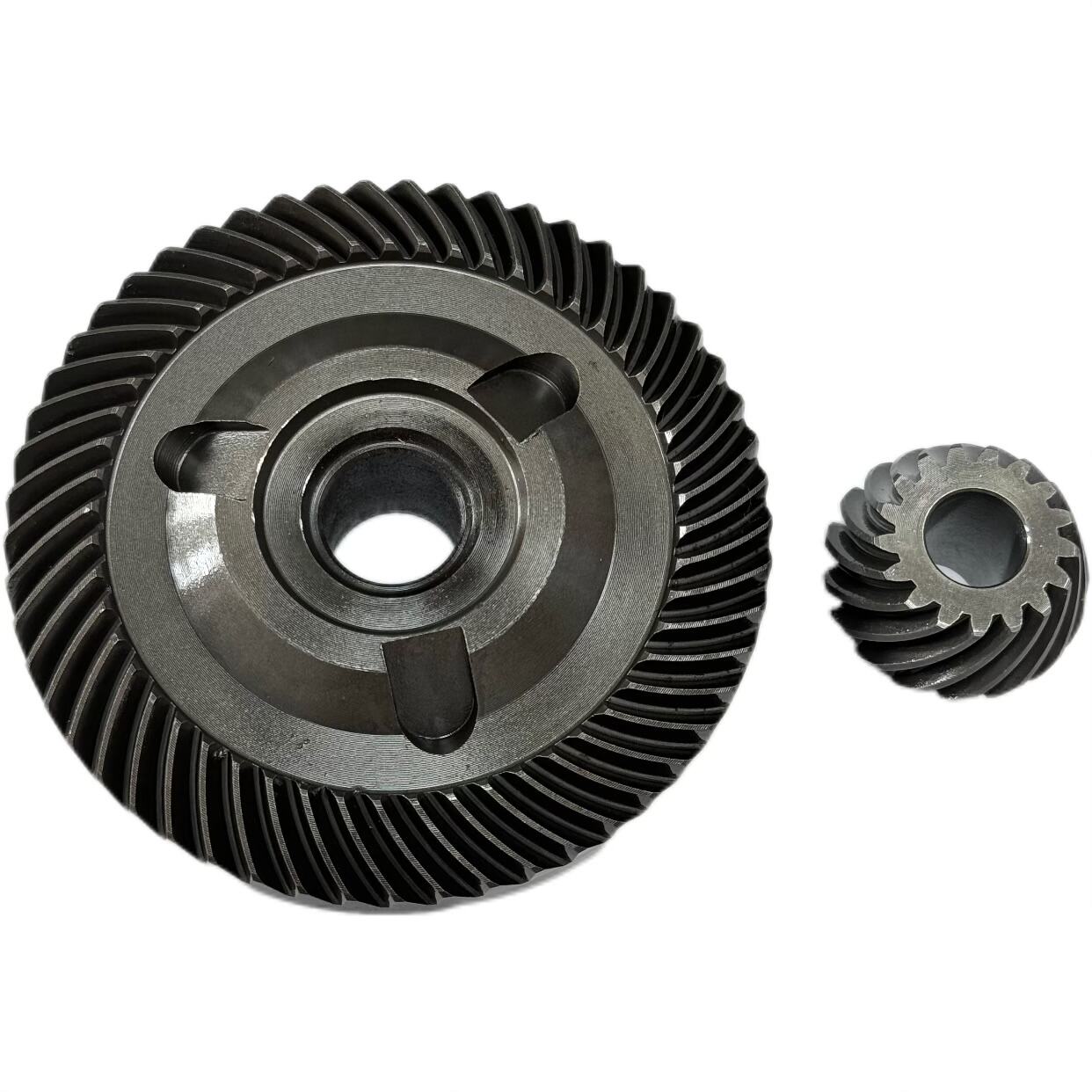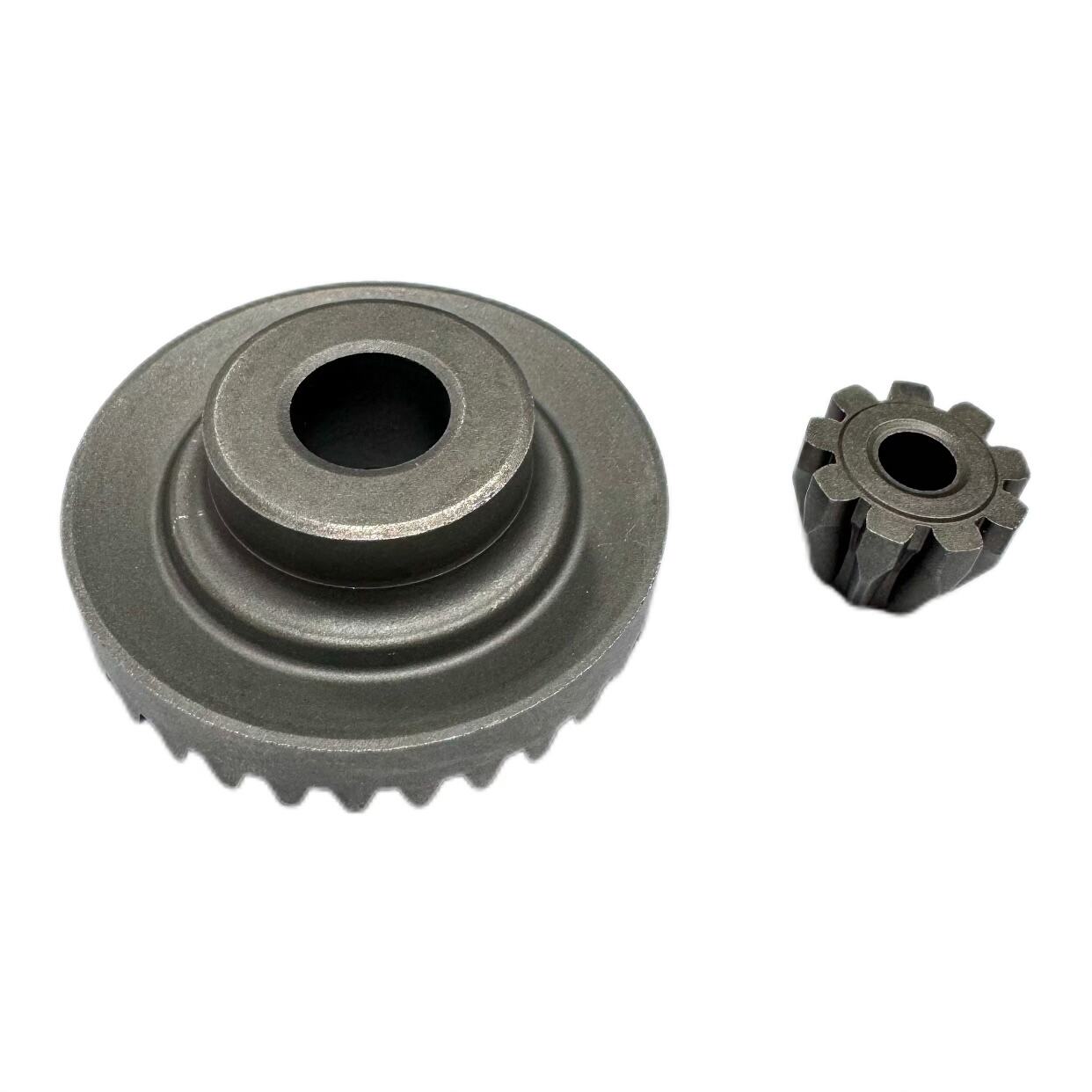How Do Material Innovations Impact the Performance of Wheel Gears?
Wheel gears are the workhorses of machinery, transferring motion and power in everything from cars and bikes to industrial robots and household appliances. Their performance—how well they handle loads, resist wear, and work efficiently—depends largely on the materials they’re made of. Over time, material innovations have transformed wheel gears, making them stronger, lighter, and more reliable. Let’s explore how new materials and improved versions of old ones are changing the way wheel gears perform.
1. High-Strength Alloys: Boosting Load Capacity and Durability
Traditional wheel gears were often made of basic steel, but modern high-strength alloys are raising the bar for performance. These alloys (mixtures of metals like steel, nickel, and chromium) are designed to handle heavier loads and last longer.
- Increased strength: Alloys like AISI 4340 (nickel-chromium-molybdenum steel) are much stronger than plain carbon steel. This means wheel gears made from these alloys can transmit more power without bending or breaking. For example, in a truck’s transmission, high-strength alloy wheel gears can handle the torque from the engine, even when hauling heavy loads, reducing the risk of gear failure.
- Better wear resistance: Many alloys include elements like vanadium or tungsten, which form hard particles in the metal. These particles resist wear from friction, so the wheel gears don’t grind down as quickly. In a bicycle’s chainset, alloy wheel gears stay sharp longer, ensuring smooth shifting for thousands of miles.
- Tolerance for high stress: Wheel gears in industrial machines often operate under extreme stress (high speed, heavy loads). Alloys like 9310 steel are heat-treated to withstand this stress, maintaining their shape and performance over time. This reduces downtime for repairs, saving money for businesses.
High-strength alloys make wheel gears more durable, even in the toughest conditions.
2. Composite Materials: Lightweight Without Sacrificing Strength
Composite materials—made by combining two or more materials (like fibers and resin)—are revolutionizing wheel gears, especially in applications where weight matters.
- Lightweight design: Carbon fiber composites are much lighter than steel or aluminum. Wheel gears made from these composites reduce the overall weight of machinery, which improves efficiency. In electric cars, lighter wheel gears in the motor mean the battery lasts longer, extending the car’s range.
- Strength-to-weight ratio: Composites are strong for their weight. A carbon fiber wheel gear can handle the same load as a steel one but weighs half as much. This is a big advantage in aerospace—wheel gears in airplane landing systems need to be strong but light to save fuel.
- Corrosion resistance: Unlike metals, composites don’t rust or corrode. Wheel gears made from glass fiber composites work well in wet or chemical environments, like in marine machinery (boats, docks) where saltwater would damage metal gears.
Composites let engineers design wheel gears that are both strong and light, improving performance in weight-sensitive applications.

3. Ceramic Materials: Heat and Wear Resistance
Ceramic materials (like silicon nitride or alumina) are hard, heat-resistant, and low-friction—qualities that make them ideal for wheel gears in high-temperature environments.
- Heat tolerance: Ceramics can withstand temperatures over 1,000°C (1,832°F), much higher than metals. Wheel gears in jet engines or industrial furnaces, which operate at extreme heat, use ceramics to avoid melting or warping. This keeps the gears working reliably even when things get hot.
- Low friction: Ceramic surfaces are smooth, so they create less friction when wheel gears mesh together. Less friction means less energy is lost as heat, making the machinery more efficient. In wind turbines, ceramic wheel gears reduce energy waste, helping the turbine generate more electricity.
- Wear resistance: Ceramics are harder than most metals, so they resist wear from constant rubbing. Wheel gears in medical devices (like MRI machines) use ceramics because they stay precise even after years of use, ensuring the machine works accurately.
Ceramics solve performance problems in high-heat, high-wear situations where traditional materials fail.
4. Surface Treatments: Enhancing Existing Materials
Not all material innovations are about new materials—improving the surface of traditional materials (like steel) can also boost wheel gear performance.
- Hard coatings: Thin layers of materials like titanium nitride (TiN) or diamond-like carbon (DLC) are applied to wheel gear surfaces. These coatings make the surface harder, reducing wear and friction. For example, TiN-coated wheel gears in power tools last 50% longer than uncoated ones because they resist damage from constant use.
- Lubricant-infused surfaces: Some treatments add tiny pores to the wheel gear surface, which hold lubricant. This “self-lubricating” feature reduces the need for regular oiling, keeping the gears running smoothly even with minimal maintenance. Wheel gears in remote machinery (like off-road vehicles) benefit from this, as they’re hard to reach for oil changes.
- Corrosion protection: Surface treatments like galvanizing (coating with zinc) or powder coating protect steel wheel gears from rust. This is crucial for wheel gears in outdoor equipment (lawnmowers, tractors) that are exposed to rain and dirt.
Surface treatments make existing materials perform better, extending wheel gear life and reducing maintenance needs.
5. Smart Materials: Adapting to Conditions
Emerging “smart” materials can change their properties in response to conditions like temperature or stress, offering new ways to improve wheel gear performance.
- Shape-memory alloys: These metals (like nitinol) return to their original shape after being bent or heated. Wheel gears made with shape-memory alloys can adjust their fit if they warp slightly from heat, ensuring they keep meshing correctly. This is useful in machinery that operates in varying temperatures, like industrial ovens.
- Self-healing materials: Some composites contain tiny capsules of resin. When the wheel gear gets a small crack, the capsules break open, releasing resin that seals the crack. This prevents small damages from growing into big failures, extending the gear’s life. Self-healing wheel gears are ideal for critical systems like power plant turbines, where breakdowns are costly.
Smart materials let wheel gears adapt to changing conditions, improving reliability and reducing the risk of sudden failure.
FAQ
What is the most common material for wheel gears?
Steel alloys are still the most common, thanks to their balance of strength, durability, and cost. They work well in most everyday applications, from car transmissions to household appliances.
Do lighter wheel gears always perform better?
Not always. In applications where heavy loads are a priority (like industrial cranes), strength matters more than weight. But in weight-sensitive uses (cars, planes), lighter wheel gears improve efficiency.
How do material innovations affect the cost of wheel gears?
New materials like composites or ceramics are often more expensive upfront, but they save money long-term by lasting longer and reducing energy use. Traditional materials with surface treatments offer a cheaper way to boost performance.
Can wheel gears be made from recycled materials?
Yes. Recycled steel and aluminum are often used to make wheel gears, with little loss in performance. This reduces environmental impact without compromising strength.
What material is best for wheel gears in high-heat environments?
Ceramics (like silicon nitride) are best—they resist melting and maintain strength at extreme temperatures, outperforming metals in furnaces, jet engines, or power plants.
How do low-friction materials improve wheel gear performance?
Low-friction materials reduce energy loss from rubbing, making machinery more efficient. They also reduce heat buildup, which extends the gear’s life and reduces the need for cooling systems.
Table of Contents
- How Do Material Innovations Impact the Performance of Wheel Gears?
- 1. High-Strength Alloys: Boosting Load Capacity and Durability
- 2. Composite Materials: Lightweight Without Sacrificing Strength
- 3. Ceramic Materials: Heat and Wear Resistance
- 4. Surface Treatments: Enhancing Existing Materials
- 5. Smart Materials: Adapting to Conditions
-
FAQ
- What is the most common material for wheel gears?
- Do lighter wheel gears always perform better?
- How do material innovations affect the cost of wheel gears?
- Can wheel gears be made from recycled materials?
- What material is best for wheel gears in high-heat environments?
- How do low-friction materials improve wheel gear performance?

